Southwest Airlines held its second quarter earnings call on Thursday. And with the airline completely upending its business model, the quarter is a good opportunity to check in with how things are going.
- They say that copying what all the other underperforming airlines are doing is going great!
- But the bottom seems to be falling out of financial performance. They now expect $600 – $800 million in profit for the year. The previous guidance was $1.7 billion. Southwest says their new initiatives are worth $1.8 billion in earnigns this year – so they grade themselves a success against a counterfactual that they’d be losing money without them. That’s one way to do accounting.
- On the one hand, the second quarter was tough with economic uncertainty derived from tariff talk. And Southwest is uniquely positioned to bear the brunt of that. All airlines have been reporting the weakest demand for domestic coach and that’s pretty much the entire Southwest product.
- Fewer people are flying Southwest. The airline’s load factor has fallen. So has the industry’s, but Southwest started off filling a smaller percentage of its seats than competitors.
- Southwest lacks a premium product, and even with all the airline’s changes the most they even have in the pipeline is extra legroom seats with no option to pay for a blocked middle seat – with poor wifi, no lounges or meals.
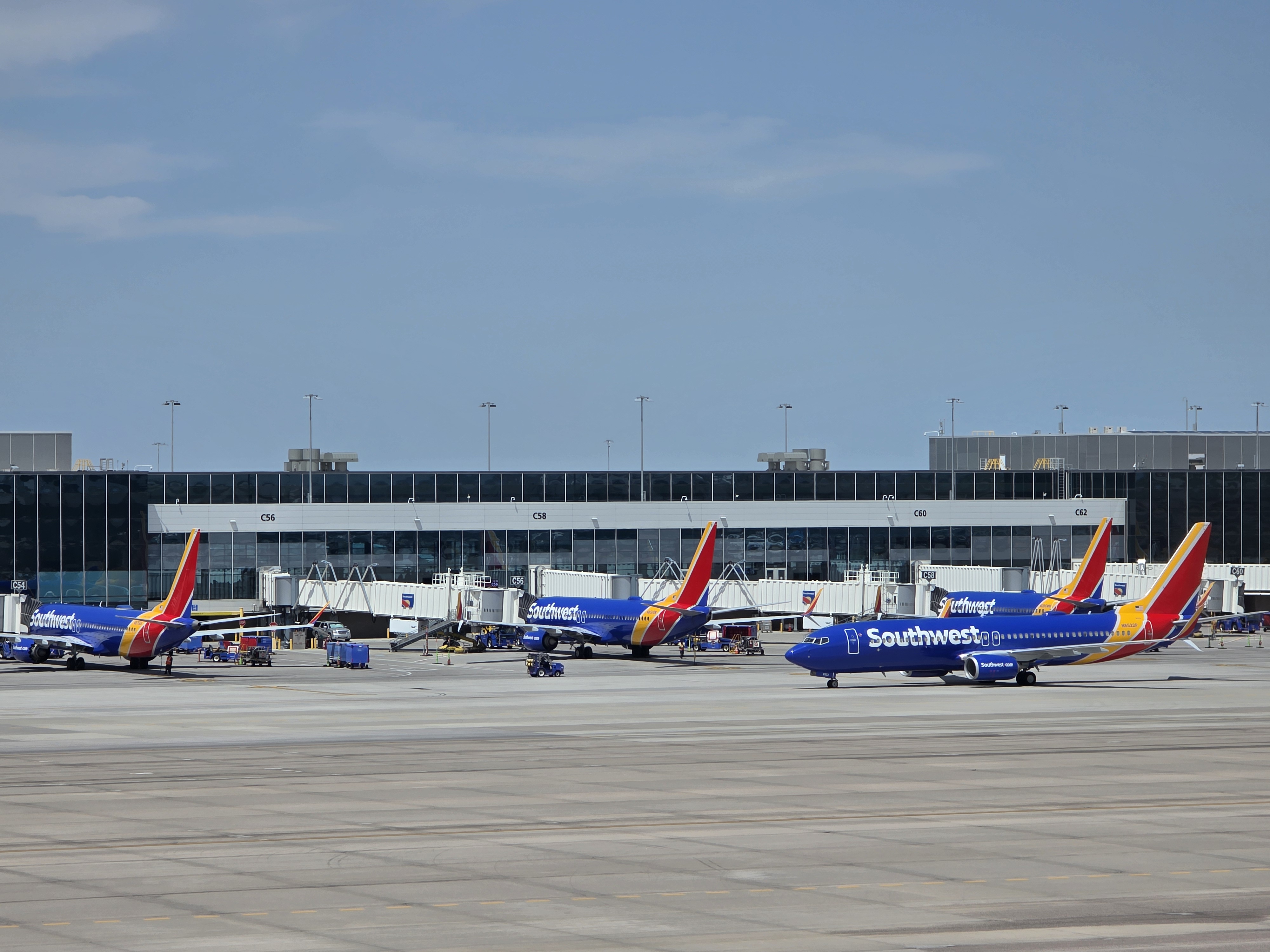
In other words, they’re giving up their differentiation and their financials are still suffering. But they’re claiming success. Southwest CEO Bob Jordan did drop a hint about lounges being in their future again, though.
Gutting The Customer Value Proposition
Southwest has reduced the value of Rapid Rewards; started selling tickets on Expedia (the worst place to buy tickets for most); started redeye flying; laid off employees for the first time ever; outsourced and started charging for curbside checked bags; ended bags fly free with new bag fees; started expiring flight credits; implemented basic economy restrictions on the cheapest fares; and started retrofitting planes with extra legroom seats (but no first class, no standard power outlets, no ovens in galleys).
One quarter of the Southwest fleet now has extra legroom seats. >Pro-tip: customers boarding early can sit in these free, until seat assignments go into effect – they’ll sell seats starting July 29 for travel January 27 onward. (Southwest is emailing customers on flights with extra legroom seats to encourage them to buy up to earlier boarding.)
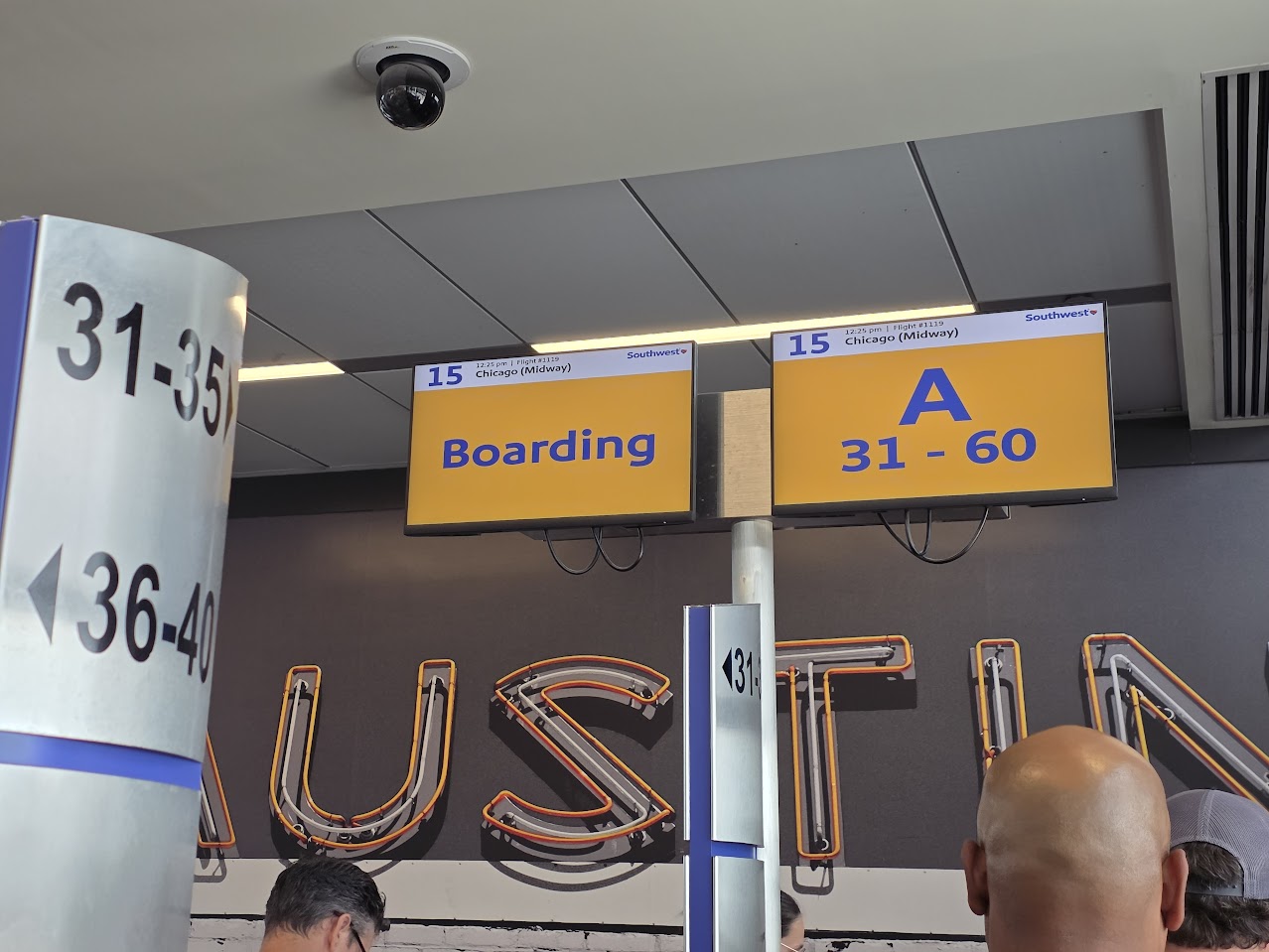
$2 Billion In New Share Buybacks
Their activist investor wanted them to load up their balance sheet with debt and buy back shares. And that is happening, with aircraft financing and now new buybacks.
Shares were down more than 10% on the day and they’re down year-to-date. They announced a new $2 billion share buyback program and shares fell.
- Buybacks don’t usually lead to sustained higher prices
- They don’t increase value per share since the value of the company falls by the amount they spend on shares, even as the number of shares fall
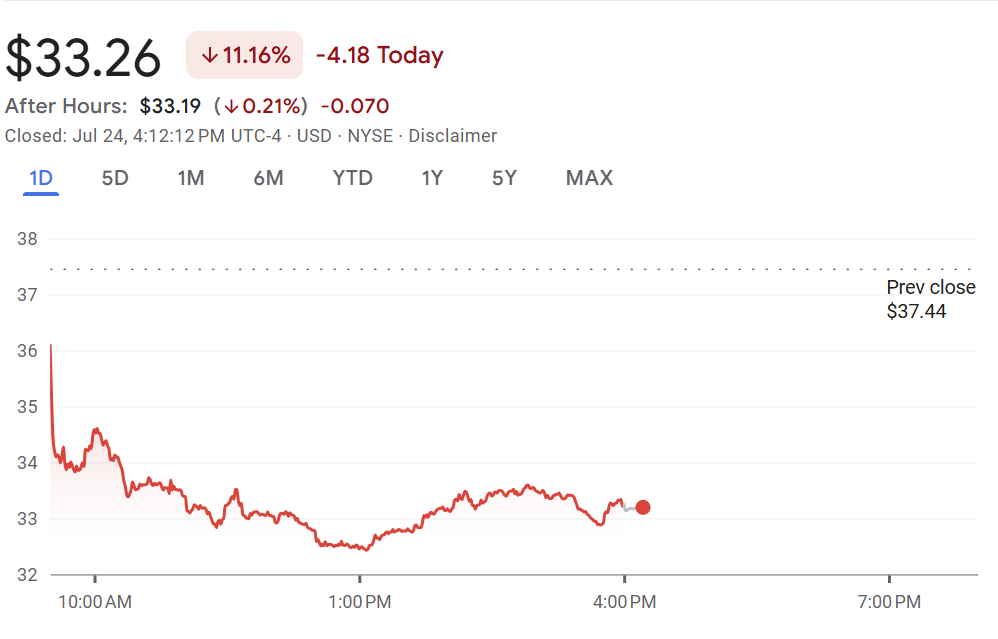
Buybacks are fine. It’s weird to think that the number of outstanding shares should ever go up. They can be a tax-efficient way to return capital to shareholders. But they don’t make a company more valuable – there can be a brief boost to price while the buybacks are actually happening (and perhaps some executives time their 10b5 pre-scheduled sales around them).
They can, however, be better for the world. If other companies have better opportunity for productive investment, freeing up the capital for investors to place elsewhere means more growth.
Southwest no longer hedges fuel. They sold off their remaining hedges (which were in the money!) for $40 million. That’s consistent with selling planes, mortgaging planes, and using the proceeds to buy back shares.
They’re also “shifting from a cash target to a liquidity target,” taking on greater revolving credit in order to meet liquidity needs. That way they can extract more cash from the balance sheet.
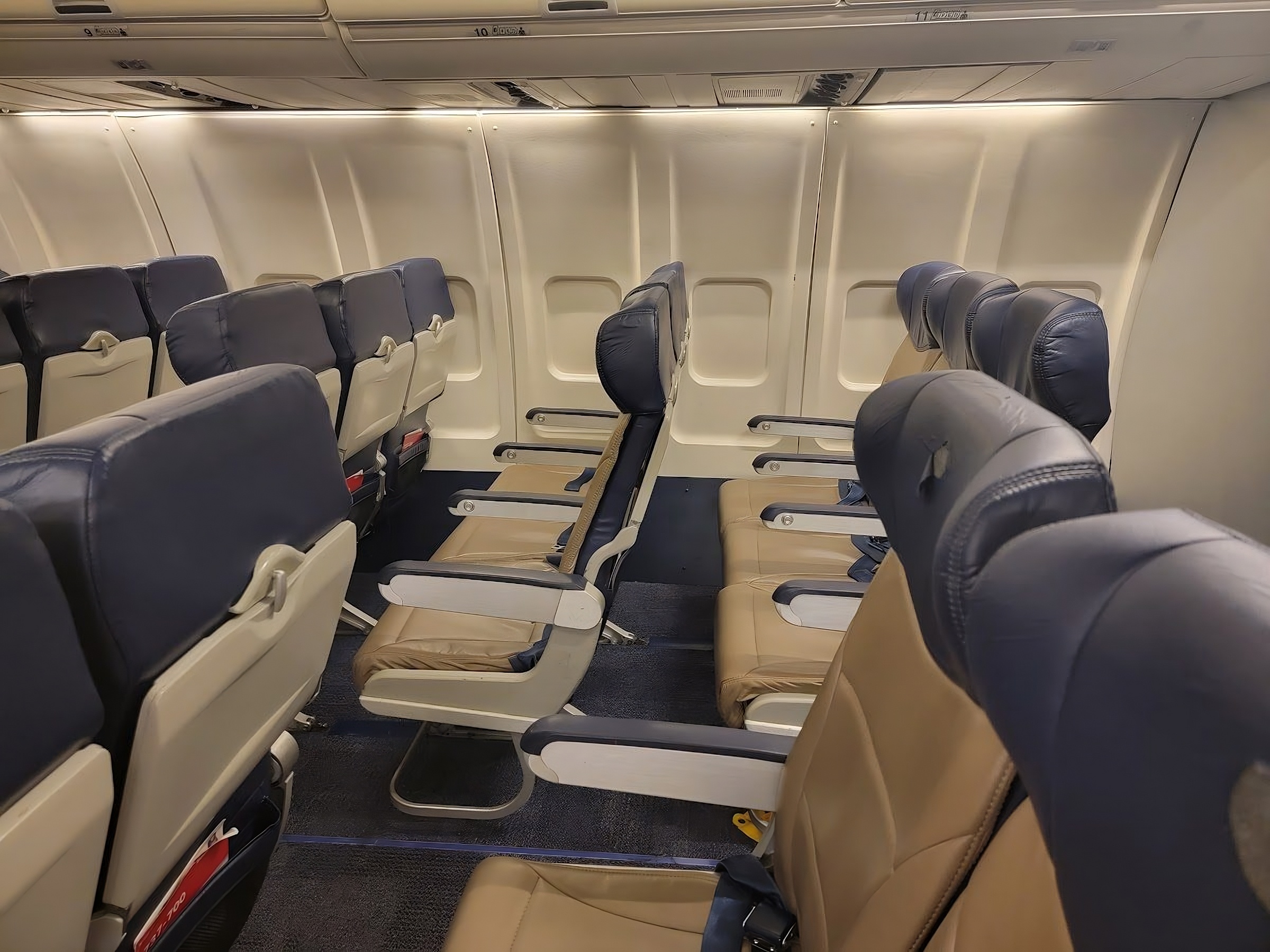
Basic Economy Scared Customers Away
When Southwest rolled out basic economy, they “experienced a temporary decline in bookings” which they attribute to reduced conversion of flight searches on their website (people saw the basic economy offering and didn’t buy). They’ve changed how they’re marketing the product during booking and things have stabilized, and they ran promotions to fill the seats they failed to sell earlier.
They describe an “impact to second quarter 2025 year-over-year RASM of nearly 0.5 point” and that’s from just one month of the quarter selling basic economy (and charging for checked bags on new ticket sales). They suggested they fixed the problem, but they “expect an impact to third quarter 2025 year-over-year RASM of approximately 1 point.” So it’s ongoing, even if they would have sold some third quarter travel in the two weeks this was supposedly going on.
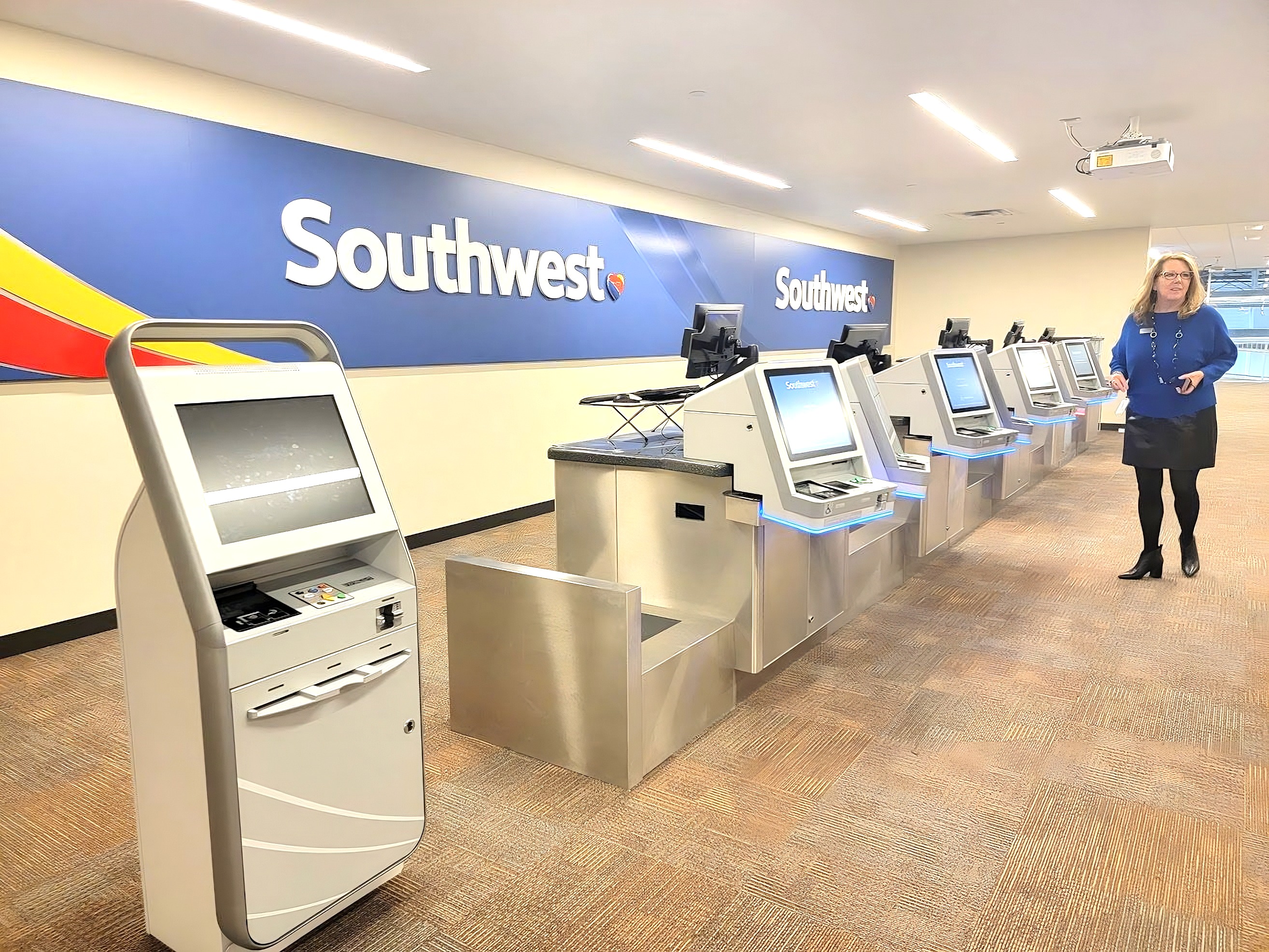
Checked Bag Fees Aren’t As Profitable As Southwest Claims
So far checked bag revenue is higher than they expected. But they don’t share how much lower their base fares are to compensate. They’ve seen “a modest increase in gate check bags as expected, but have experienced no negative impact to the operation.” They’re using AI to tell them how many bags to confiscate from customers at the gate for each flight, so that it’s not being done at the last minute.
Southwest estimates that “checked bag fees will result in more than $350 million of EBIT for the full year 2025, which compares favorably to our initial estimates and has a run rate of approximately $1 billion of EBIT had it been in place for the full year.”
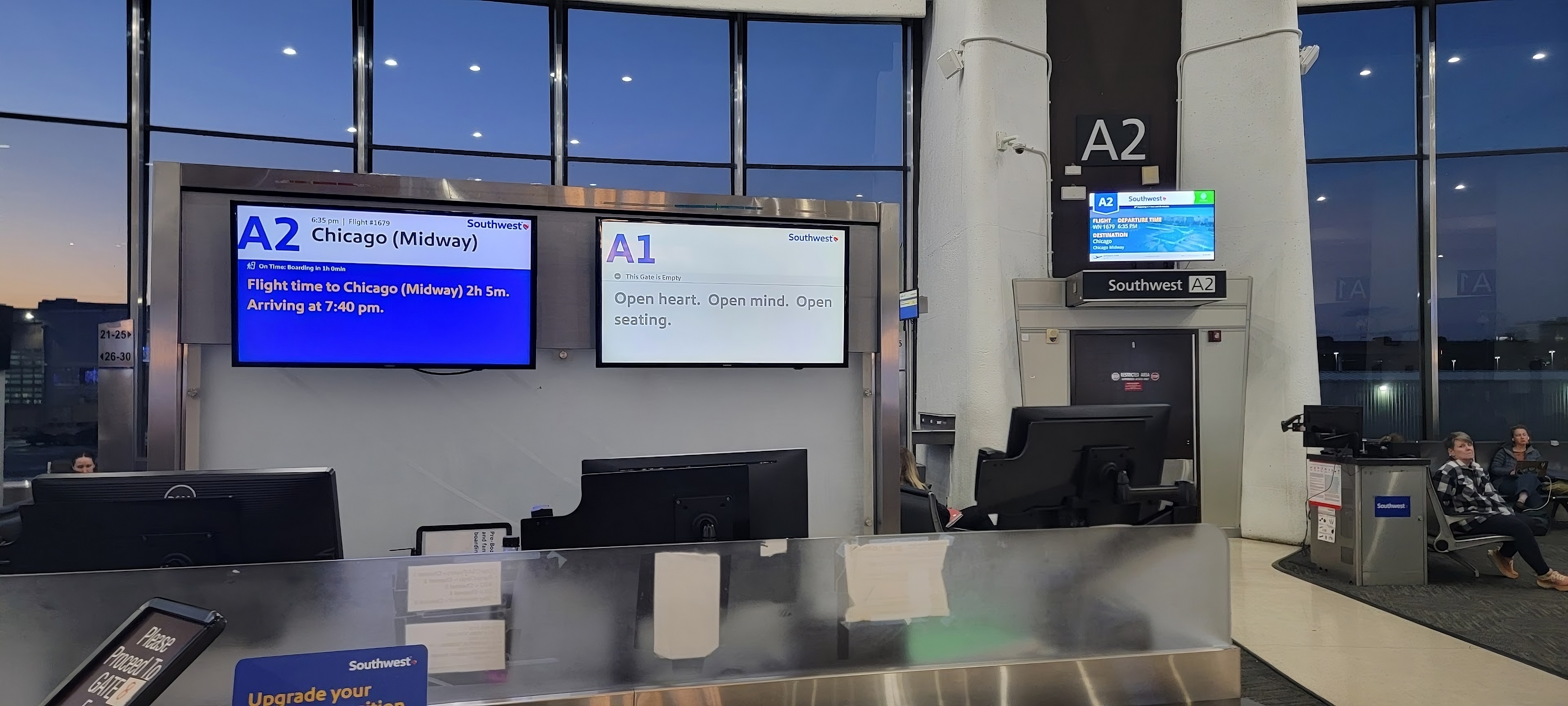
Checked bag fees are not all profit! Generally fares fall, and fees make up a portion of that. It’s what we’ve seen overall in the industry with fares and fees combined declining on an inflation-adjusted basis.
And with Southwest now selling 5% of its tickets on Expedia, they need their pricing to be competitive with United, American and Delta. Previously they bundled checked bags and frequently charged more than the lowest fare offered by competitors. That’s the whole idea behind Southwest’s basic economy is to match lowest fares but charge extra for everything.
What checked bag fees do is (1) price discriminate and (2) tax arbitrage.
- Some people want to check bags and others don’t. Those who do pay more. But it’s your most price sensitive vacation travelers and families that tend to check bags and whom you’re trying to charge extra.
- What’s huge, though, is that fees aren’t subject to the 7.5% excise tax on domestic airfare. Moving $1 billion out of fare and into fees saves the airline $75 million in taxes. It shouldn’t be this way – the tax code shouldn’t treat base fare and fees differently – but it does. Congress is subsizing the very fees travelers hate.
A year ago Southwest was saying they’d generate $1.5 billion on checked bag fees and still lose money charging for bags because it would cost them $1.8 billion in revenue from lost sales. So they can say how pleasantly surprised they are by $1 billion in revenue, but it sounds like underperformance and fails to account for the lost sales that Southwest said would be much greater.
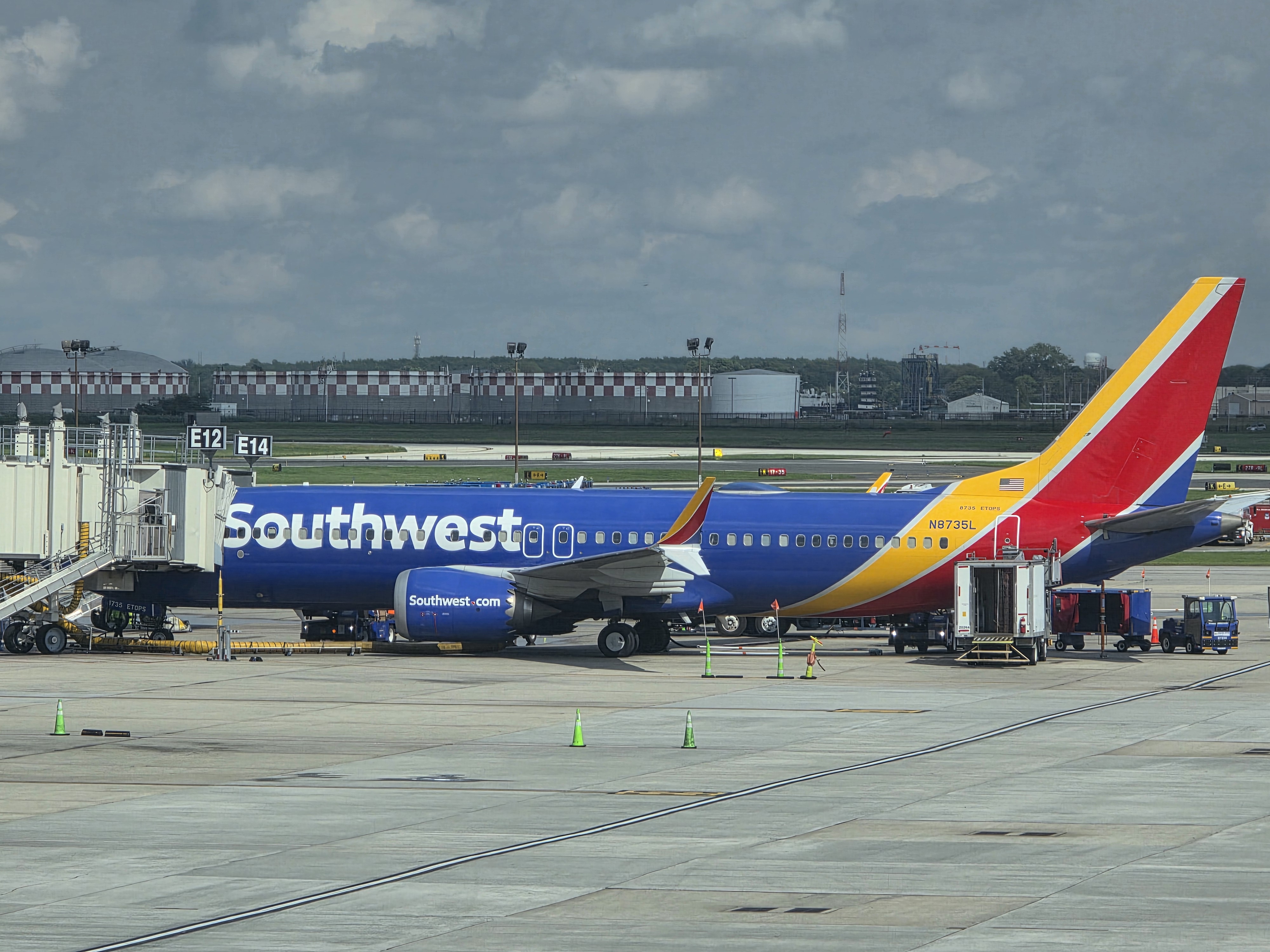
Southwest was floundering. They had gotten bloated and they’ve been slow-moving. And the pandemic accelerated a shift in customer preferences away from their basic product and limited route network. That critique was fair. But they were the most financially successful airline in history, most consistently profitable, and that was because they were fundamentally different than the copy cat industry of underperformers.
There’s a reason that Warren Buffet used to say the quickest way to become a millionaire was to start out with a billion dollars and invest in an airline. That was true most everywhere except Southwest. Southwest’s investors aren’t being rewarded for this performative effort. Elliott Management doesn’t seem to be getting rewarded for it, either. And it’s just sad to watch.
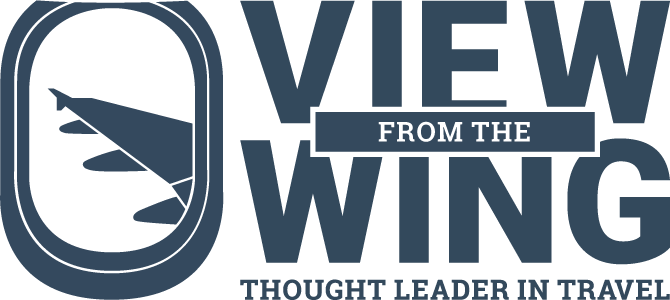

What?! I’m shocked! Screw your customers. And they react negatively?! How?! Chase, quick, raise the annual fees!!
as usual, Gary, your incessant bias prevents you from being able to see what LUV actually reported.
They shrank the airline including by taking out aircraft and continue to do so because the MAX 7 is STILL not available and -700s are running out of time. They are flying their -800s and MAX8s more by adding redeye flights but that also adds more seats/flight. Their load factor is down and they are flying longer flights.
But they also “fired” a lot of low fare passengers; their yield performance was the best in the industry in the 2nd quarter. Most domestic carriers saw yield erosion and they made up by adding capacity; WN went the opposite direction in shrinking capacity and had better (or least bad) RASM performance that other carriers did on their domestic system.
WN has not started collecting seat fees so there is NO pushback. They have over 200 aircraft w/ the new interiors so there are many people that will get better seats than WN had before the conversion until Jan 2026 when charges for seats take place.
WN charged for bags for one month out of the quarter. They have enough data to know where things will go but they just didn’t accumulate enough revenue for it to be meaningful.
WN has not gotten the costs out associated with being a smaller airline but their cost performance was better than other airlines.
WN is still very much in transition but, as much as you want to believe otherwise, they are not shooting themselves in the foot w/ these changes.
They are managing through weak domestic demand and excess capacity better than their peers.
I predict that within the next year or 2 Southwest Airlines will sell. Terrible run company that at one time was the leader in the airline industry. Gary Kelly, Bob Jordan, and all the other Southwest Airlines Corporate Stooges destroyed Herb Kelleher creation.
As soon as flyers perceive they are getting a Spirit Airlines experience at United prices, it will be game over for Southwest. I stand by my prediction that it will happen very quickly once the new Terminal 1 is completed at SAN.
Basically, Bob Jordan is admitting that if SWA’s management team didn’t consistently underperform doing their job, they’d really suck…
I always say, If it ain’t broken don’t fix it. I present to you exhibit A: Jet Blue.
Ha Ha Ha!
@Tim Dunn – you are hallucinating like a bad AI.
You write “They shrank the airline” they reported capacity up 1% YoY
“Their load factor is down and they are flying longer flights.” Their load factor is down, which I wrote, and that’s true *even with moderated capacity.* Not good!
“WN has not started collecting seat fees so there is NO pushback. ” I did not write that there was pushback on seat fees.
“WN charged for bags for one month out of the quarter. They have enough data to know where things will go but they just didn’t accumulate enough revenue for it to be meaningful.” They are projecting revenue, but my point is (1) they are projecting less than they said was break-even, and (2) they are reporting it as though it’s profit, which it is not, given the tradeoffs in fare and in seats sold.
SWA will be in worse shape moving forward. SWA is not a major airline, all things considered, no lounges, no wi fi, no power ports, no first class, no business class, no meals, charges for baggage and once SWA starts to play with DFW and AA, I think it will be a bad day for SWA.
Would hate to be an employee at SWA these days!
@Josh — As I’ve said before, I really do feel for the workers, because those pilots, crews, maintenance, baggage handlers, customer service, and others at Southwest are decent folks, just trying their best. This isn’t their fault; it’s Elliott (mis)Management forcing these negative changes. So, I’m not optimistic here; I think SWA will downsize to oblivion, assets sold off to Delta, Pan Am-style. Ultimately, that’s not great for competition, consumers, or workers, but I’m sure a few folks at the top will make a lot money, golden parachutes and all, like usual.
Ultimately, Tim and Gary both make complementary points here: Southwest is adapting and doing better than many airlines on yield, but the transformation isn’t yet proving profitable in absolute terms, and it may carry brand risk if value erosion continues.
Hey everyone, Tim just accused Gary of “incessant bias!”
Thanks for that laugh, Timmy.
Customers are deterred by 6-month fund expiration and the imposition of bag fees, in most cases without any reduction from the previous price with no funds expiration and two free bags. This can’t be a surprise to anyone.
Elliottball is not a game customers want to play.
Gary,
You could use some intelligence – whether artificial or not – to understand WN’s financial report.
their revenue passengers were down 5.3%, enplaned passengers were down 6.1% and most significantly, their RPMs were down 3.5%.
It doesn’t matter that ASMs were up 3.5% given that their load factor was down 4%.
WN is a shrinking airline that has planes too large that are flying longer flights.
and they actually moderated their performance from the first quarter; many of the changes including the bag charges weren’t even announced in the first quarter – and yet their performance in the 2nd quarter is better than in the 1st quarter.
Customers are not reacting to WN’s policy changes – at least that asssumption CANNOT be made from the numbers they provided.
I get that you desperately want to criticize WN’s strategic changes and you might be right – but the number they provide and the ones you cherrypicked (yeah, that is just for you) do not support your conclusions.
WN IS still flailing in an excess of domestic economy seats including with players like AA that do not have a path to sustained profitability.
and Mike Hunt, as usual, gets it. WN’s transformation may not be successful – or it may be. The numbers and the outlook the company provided is not about WN’s transformation but about domestic overcapacity. WN simply does not have access to the premium and international revenue that is fueling DL and UA’s profits. AA cannot get the premium revenues or as much international traffic as DL or UA.
and WN, like AA and DL, and unlike UA, is paying industry standard wages and benefits.
I’m really looking forward to dining on peanuts and crackers at the new Southwest Airlines Lounge.
@Tim Dunn, I’m confused by your comment that they “shrank” – within the quarter, they gained net 10 aircraft (yes got rid of 700s and acquired more and larger Max 8s) – I’m not a director of an airline but if they are flying less but with more aircraft, that sounds like worse asset utilization to me.
I agree there may not be signs of “shooting themselves in the foot” necessarily in these numbers, but this is a costly transition and there is little to no evidence of any improvement either – if you spend money for no improvement, it is still a bad idea.
SW Hdqrs are at LUV, about two miles W of me. Excellent article and response, Gary! SW is massaging the numbers, looking for the proverbial diamond (or whatever) in the pile that Elliott has made them create. I’ve not scoured the SW news release … but offer some observations: Except for last-minute buys AA at DFW usually has far cheaper fares. SW doesn’t have a Bank-Card program, as noted, flying passengers is now an ancillary job of some carriers, plastic is where the money is. More important, for a half-century I automatically assumed I’d fly SW if it went to that destination without more than one plane-change. That’s gone. Elliott is doing exactly what they promised, stripping SW of assets, a wise bet on fuel-hedging kept SW (very) profitable in prior years, loyalty and good memories are erased. Things we all agree on: SW can’t compete with DL, AA and UA. Carriers viewed as “low-fare” don’t exactly have a history of being profitable. And Elliott doesn’t intend for this to be a long-term investment.
@Tim Dunn — You and @Mike Hunt can enjoy counting your chickens before those eggs hatch, but, many of the negative changes haven’t even ‘hit’ customers yet. Like, assigned seats don’t even begin until January 27, 2026, and the bookings for those flights go live next week, July 29, 2025. Between that, the extra costs for checked bags, and the increased credit card annual fees, soon, there will be ample ‘reaction,’ and I cannot see how any of it will be ‘good’ feedback from passengers.
they shrank in the number of revenue passenger miles they generated.
Yes, they are not using their aircraft as efficiently as they did – but they also said they will retire more aircraft after the summer – probably are using the excess number of aircraft to cover for aircraft they are taking out of service for the seat mods.
yes, they have to show that their strategy works – but they have one month of bag revenues and none of the seat revenues. There just is not enough data to make any conclusions about the success or failure of their strategies.
We do have to accept – whether we like it or not – that they say they are collecting more bag revenues than they expected.
as much as people want to ding WN’s strategic changes, they offered something unique which no longer exists. It’s not exactly like anyone is going to find WN’s former customer proposition elsewhere.
WN will have to compete for passengers on the same basis as every other airline – schedule, price including all of these add ons. I’m not sure why some people think they are going to vindictively and irrationally walk away from WN because they now have a similar customer proposition, at least in coach, as on other airlines.
The passengers that WN is losing are those to whom they provided a service that was not profitable. They “fired” a bunch of those passengers and increased their yield in the process – something other airlines did not do in the domestic market.
Decker,
you do realize that AA’s financial report and outlook is not exactly winning either? Telling us that fares are cheaper at AA is exactly what we would expect.
and WN’s hedging program has lost more money than it made for years. IT worked great when all of the big legacy carriers were in or circling the toilet bowl.
and, yes, WN is monetizing assets including a massive aircraft order that had little value – and it also puts the screw on Boeing which gave WN the discounts because of WN’s loyalty to Boeing. Why should WN not take advantage of all of the excess aircraft and great discounts on the wrong size aircraft WN doesn’t need given that WN has been waiting the better part of a decade for the MAX 7 and Boeing still can’t get them delivered?
and 1990.
I read the numbers and come to conclusions based on what the numbers say, regardless of whether I like them or not.
WN is still in transition and may or may not deliver on their strategies – but the numbers don’t support the notion that some people come to.
It’s great to see Elliott being fisted on its investment. After gutting the WN model they deserve all the pain they are getting. WN stock will continue to fall as these initiatives are a big fail (as all of us predicted). It is probably not too late to reverse course but Elliott board members will never let that happen so instead they can continue to flush $$$. The credit card program losses will be the big news for Q3 and Q4 as Chase will not be happy. It is expensive to buy new customers for 100k miles when they can’t replace all the long time cardholders that are cancelling.
Sad for customers, sad for employees.
If herb was alive none of this would have happened.
@Tim thanks for the clarification.
I agree with you, they are firing low yield passengers. I also agree there’s not much data here, but I also think their underperformance has been for long enough now that investors actually want to see something for it – they got to choose when they launch stuff and choosing to do it so they can hide numbers by saying there’s only one month of data is also their choice.
But I think what everyone is questioning is that without the low yield customers, they aren’t attracting enough high yield customers to make a profit. If their value proposition is the same/arguably worse than UA, DL and AA they aren’t going to be attracting any additional volume.
Airlines are a fixed cost business, of course airlines want higher paying customers and not to fly lower paying customers. But low paying customers are free money compared to flying empty seats (which WN is paying for no matter if someone flies or not), so if they are firing low yield customers but not attracting higher yielding customers, then they just make less money. One could say their new strategy is trying to attract higher yield customers – but its not a good proposition (A worse loyalty program than everyone else, a worse network than everyone else, a worse cabin than everyone else, no lounges etc.) so they are left with the levers you mention, price and schedule – they fly to worse airports so there goes schedule and price literally lowers their yield to compete.
Southwest is in a tailspin…..soon no better than JetBlue, Spirit and other 3rd-rate airlines…….I will definitely put SW on the back burner and shop around more seriously.
Despite working for one of the Big Three for 10+ years, on the rare occasion that I purchased a ticket rather than using my standby flight benefits, I almost always bought a WN ticket. I could cancel outbound and keep my return, I could cancel up until 10 minutes prior to departure and keep the value of the ticket, and the credits never expired. Plus the employees were friendly and customer service was excellent. Now that Elliott has all but gutted what was the heart of Southwest, I’ll look at them when shopping but I doubt I’ll fly them often. Expiring credits suck. Checked bag fees mean more carryons so a greater chance of having to gate check mine. And paid seats only increases costs or the risk of an undesirable seat. No thanks to all of that. At least on the Big Three I have the option to purchase or upgrade to First.
So, the numbers in the fancy reports might not reflect it yet, but anecdotally my story and thousands and thousands of others do predict that the changes will not do well for Southwest.
LUV stock is up over 18% (33.26/28.08) in the last year so no wonder Elliot is pushing ahead. That is slightly ahead of the S&P 500 for the same dates (07/25/2024-07/24/2025). Wall Street thinks that SWA is on the right track.
@Tim Dunn — Those ‘numbers’ might seem ‘okay’ for today; yet, a tsunami is coming!
@jns — Oh, good Wall Street is happy. Please do tell the passengers and crews!
The Frontierification / Spritification of Southwest in the Northeast and Floridas will likely not go well as JetBlue is somewhat ahead of the game in offering upgraded cabin experiences, in the NE where the yield allegedly is.
JetBlue’s 220 will be the game changer for B6 to differentiate, and propel and regain their competitive foothold in the region as WN deals with its increasing cost structure and passengers perceptions of declining values.
The added wildcard of Breeze will not do any favors for WN either.
Honestly flew you because free baggage, no more. Well done
@Gary: “But they don’t make a company more valuable”
No. Management can signal that the company is undervalued by buying back shares.
” so they grade themselves a success against a counterfactual that they’d be losing money without them. That’s one way to do accounting.”
The WeWork of the air.
At the end of the day, no one gives a $h!t about southwest airlines.
What happened to the “poison pill” that SW had originally devised if Elliott tried to take over?
Andy
WN indeed has to prove it can do the turnaround – but let’s keep in mind how “sucky” AA’s results were.
You wanna guess whether AA or WN has better staying power? WN’s balance sheet is by far their biggest asset.
Elliott wants to see a turnaround and wants to cash out but do you know that LUV stock was the best performing large jet stock in the US year to date? down just 1%, AAL down 34%. DAL and UAL down high single digits.
1990
tsunami, no.
war of attrition, yes.
we’ve had a couple years of a stable economic environment post covid. It is clear that there are too many carriers offering too many seats chasing too few passengers.
something has to give. You can’t have an industry w/ just 2 viable players.
There will be blood shed in the next few years and it has to be enough for the rest of the industry to survive.
I price Dallas-MSP, Dallas-PHX regularly, relatives living there. I know what fares are offered. I don’t ponder what causes the prices. MSP, AA has non-stop, SW a 2 stop, all others connect. SW, 5-7 hours, AA 2:21. Explain, please, unless SW is desperate for funding, why it would SELL planes it owns outright, then lease them back from buyers at X% markup, legal, other expenses on both sides? Hedging on fuel prices based on my recollections: my SW stock kept dividends flowing, when almost all others where flying into Chapter 7. ” Between 1998 and the summer of 2008, the company saved an estimated $3.5 billion over what it would have paid for fuel because of its hedging program. Its success in the 2000s resulted in a $1.3 billion hedge gain in 2008.” I bailed out of LUV long before today.
@Tim: ” but do you know that LUV stock was the best performing large jet stock in the US year to date? down just 1%, AAL down 34%. DAL and UAL down high single digits.”
No. The appropriate date is the date that Elliott took over, Oct. 24th 2024. In the period to today UAL had a return of 20.4%. LUV only 9.3%.
@Tim Dunn: “we’ve had a couple years of a stable economic environment post covid. It is clear that there are too many carriers ”
Too FEW carriers. There is too little competition.
I’m using all of my 200,000 Southwest points this year since I have grave doubts about the airline’s future survival.
Too little competition.
Just to put a positive spin on these discussions. I am in my 21st year at WN. I am one of the FA’s. I am very happy to see to modernization efforts. I am very happy to see the red eyes. I love the idea of the assigned seat. It can be painful to watch and deal with some of the challenges of open seating.
I think the product is much improved from when I first started working at WN. I believe it will only get better. From an internal perspective the management communicates much better. I only can hope for more improvement in on time performance. Which the hub and spoke transition will greatly improve.
My only wish for Christmas is that congress approves transportation improvements. The list is huge…
The back and forth in these comments is on fire! Lol Thanks for sharing the latest update. For a normal customer like myself, they’re losing their brand identity and what made me love SW. I put up with more b/c that was SW. Now I tend to look elsewhere b/c I’m paying close to the same and getting less. It’s not a good look and customers will continue to decline over time.
@L3 – research doesn’t support any lasting benefit to share price from buybacks
@jns – don’t cherry pick dates, Elliott Management invested in June 2024 and the stock fell between then and July so you’re overstating the gains since they invested. Indeed, they could have passively invested in an S&P 500 ETF and done just as well (Southwest hasn’t outperformed the index since the investment).
@Tim @Andy – firing low yield passengers is not smart strategy when you aren’t filling seats. Low yield still significantly exceeds marginal cost, and Southwest’s loads are below industry average. Southwest’s problem is that they are not replacing these passengers with higher yielding ones.
And the market clearly did not like what it heard from Southwest.
@Tim Dunn — Too few passengers? I’ve been traveling plenty lately. About once a week this year, mixing up my carriers. The planes are still ‘full’ here (in the USA, and around the world).
When I was at DEN, concourse C, last weekend (mostly for the Centurion, which was busy), I saw the line-ups for the Southwest flights, and they were still packed. So, I’m not sure where you’re seeing the drop in demand (unless it’s foreign tourism, because of at least the perception of our ‘mad king’s policies, you know, renditioning to El Salvador, etc.), but people still generally want to fly.
Yes, I have my anecdotes; but, I think consumers still have disposable income, and at the same time, they don’t like to feel ‘screwed.’ On the consumer side, the main issue for SWA is that for decades they’ve had consumer-friendly policies (no paid seat assignments, two free checked bags, flexible tickets, decent program), and a lot of that is about to change for the worse, just as these tariffs on our Allies hit in August, and the summer travel season dies down. That’s the tsunami. That’s why they’ve changed their financial forecast at SWA.
With all the negative changes that have taken place and are scheduled to take place, Southwest has become just another dumpster fire. The entire airline industry is a big hot dumpster fire so to speak. Elliott is unquestionably to blame for the train wreck that is happening at Southwest.
Perhaps it is time to shut Wall Street down. Permanently.
Ultimately the question is will bag fees more than make up for possibly lower load factors and fares. Bag fees are near 100% profit and exempt from taxes. Since bag fees were not instituted on flights purchased from late May on anything now is just speculation.
In general, there’s too many coach seats chasing too few customers and that leads to heavy discounting of BE fares. BE fares are total money losers. There needs to be other sources of revenue to make up for flying people around and losing money on each person the airline is flying around.
Very simple for me –
No First Class = No Way I use WN
You reap what you sow. Every good businessman knows never to mess with a great product, but Southwest managed to completely destroy its outstanding business model. Stupid on steroids!
Gary,
thank you for posting the LUV chart; we as commenters can’t do that.
and, yes, LUV did worse than AAL yesterday on Wall Street because there is an expectation – because WN has said so – that they would turn things around – and that hasn’t happened yet.
In contrast, nobody really expects AA to be as profitable as DL or UA even though all 3 have the same “ingredients” available to them.
All of the discussion about UAL’s stock performance has to take into account that UAL rode a significant increase in its stock because it started approaching DL’s levels of profitability in 2024. But that improved financial performance comes from underpaying its staff and started to erode in the last quarter as UA took a charge for settling w/ its FAs; we will see UA’s costs increase -net of retirements from FAs if the TA passes (we’ll know shortly) and then other labor groups settle with the mechanics certain to be next.
As for WN’s load factor, they are significantly overgauged because of their inability to receive 737-MAX 7s. They have held onto -700s as long as they can but those aircraft are being retired in larger numbers and the only aircraft they can add are MAX 8s with 30 more seats. Their network has been built around smaller aircraft. They are selectively getting rid of -800s because those are relatively young aircraft and if they have to take an aircraft that large, they would rather it be a MAX 8 which has full transcon and mainland to Hawaii range. They can make money getting rid of older -800s.
WN is trying to rebuild its network around larger aircraft than it wants but it needs a smaller aircraft even though they have been walking away from a growing number of MAX 7 orders even when the plane becomes available. The chances are high that they will start working on a new aircraft and type and I am betting it will be the A220-300 with them interested in the stretch of that model when it becomes available. There is no carrier that Airbus would love to add than WN. There will have to be a 2nd type added at some point.
and when you add a 2nd type for domestic flights, then adding a widebody for longer international routes becomes much less of a big deal.
WN is very likely only partway through the process of transformation with what it has announced so far. In 5 years, it might look more like a true AA clone and succeed better at it than AA itself.